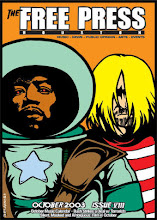EL CID

Marching into history or film history? The life of El Cid has been reinterpreted by historians and so has the film version made his death a myth. Briefly, El Cid was an 11th century Spaniard considered a father figure for his country, a personage revered by Christians and Muslims. The film gets the deluxe DVD treatment, released as part of the Miriam Collection. (That means the film, which was re-released by Miramax in the 90s, has gotten a Criterion style DVD release. Miriam is the name of the Weinstein brother’s mom, thus Miramax, a combination of mom and dad, and now the Miriam Collection.)
First of all, the double-disc set comes in a limited collector’s box that contains the DVDs, and reproductions of the program booklet (thick and chock-full of pictures), the Dell comic book version of El Cid, and five lobby cards (reprinted 5 x 7-inch). Next, the special featurettes are great: especially the lengthy docu on producer Samuel Bronston and the examination of the music of the film’s composer Miklos Rozsa. There are also docs on director Anthony Mann (great interview clips from 60s television), and the actual making of the film, which wavers between gossip and technical. The commentary track joins Bronston’s son, Bill Bronston, and the producer’s biographer Neal Rosendorf.
There’s a Houston angle to this film, mainly that Bronston lived his last days in Houston on Avondale (in the Montrose) right around the corner from Free Press Houston world headquarters. With El Cid, and the Fall of the Roman Empire, Bronston not only put 60s Franco Spain on the movie making map, he became one of the world’s biggest producers. Indeed the Roman Empire set was and remains the largest ever built for a film. The story of Bronston’s rise and fall is itself the stuff of cinematic legend.
El Cid, the film we’re actually talking about, unwinds so beautifully you might only regret that you’re not kicked back at a plush movie theater. The film opens with Rozsa’s introduction music, there’s intermission music; pic was lensed along a trail of actual castles the likes of which dominate their landscape. The attention to detail hinges on obsession. So complete are the wardrobes and props and actual locations that you don’t see all there is to see, but the reality of the time never falters. At one point, during one of the many actually exciting fight sequences the commentary reminds that the two-handed broadsword on display was made at the same factory in Toledo that made one for the original character (El Cid is an Arabic title of respect for Rodrigo Diaz de Vivar) ten centuries previously.
El Cid is old fashioned epic film making with thousands of extras in costume and golden sunsets on medieval plains that originally came out in 1961. It’s hard to ask for more.










